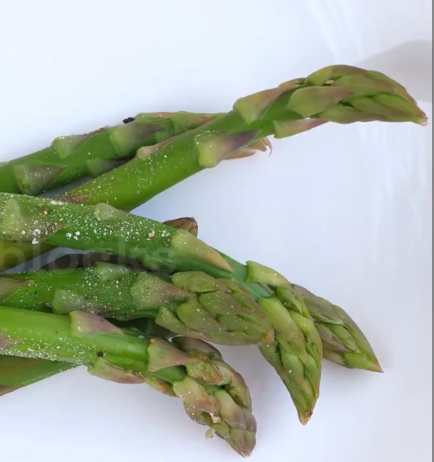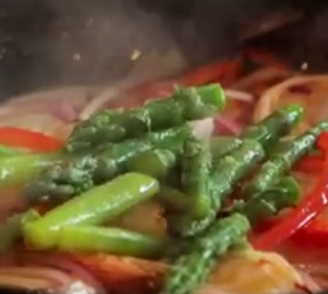The Asparagus that we know best and that ends up on our tables is Asparagus officinalis L. and belongs to the Liliaceae family.

It is a large genus comprising 200/300 species including:
- Asparagus cochinchinensis
- Asparagus pseudoscaber Grecescu
- Asparagus maritimus L.
- Asparagus brachiphyllus Turcz
- Asparagus prostrates Dumort
- Asparagus africanus Lam
- Asparagus racemosus ecc.
- Asparagus laricinus Burch
- Asparagus adscendens
It is quite an important horticultural crop and is cultivated in Asia, America, Europe and Oceania.
Food
Asparagus is a foodstuff used both raw and cooked.

The colouring of asparagus can be green, purple and white.
Medical
Asparagus contains anti-inflammatory components and a variety of antioxidant nutrients, including beta-carotene, vitamin C, manganese, vitamin E, zinc and selenium (1).
In addition to these interesting components, phytochemical analysis has identified folic acid, vitamin B6, thiamine and rutin.
In traditional medical science, asparagus is used to treat liver diseases, bronchial asthma, gout, bladder and kidney stones and various rheumatic diseases.
Studies have verified the anti-cancer activity of asparagus (2) as well as its anti-arthritic and anti-inflammatory activity (3).
Cosmetics
Skin conditioning agent. It is the mainstay of topical skin treatment by restoring, increasing or improving skin tolerance to external factors, including melanocyte tolerance. The most important function of the conditioning agent is to prevent skin dehydration, but the subject is rather complex and involves emollients and humectants.
Asparagus studies
References________________________________________________________________________
(1) Begum, A., Sindhu, K., Giri, K., Umera, F., Gauthami, G., Kumar, J. V., ... & Dutt, R. (2017). Pharmacognostical and physio-chemical evaluation of Indian Asparagus officinalis Linn family Lamiaceae. Int. J. Pharmacogn. Phytochem. Res, 9, 327-336.
(2) Almehdar, H., Abdallah, H. M., Osman, A. M. M., & Abdel-Sattar, E. A. (2012). In vitro cytotoxic screening of selected Saudi medicinal plants. Journal of natural medicines, 66, 406-412.
(3) Kumar, S., Srivastava, P., Gupta, S., Dhanawat, M., Rani, S., Ajiboye, B. O., & Gautam, R. K. (2023). Pharmacological Evaluation of Different Extracts of Asparagus officinalis (Asparagaceae) as an Analgesic, Anti-Inflammatory and Anti-arthritic Agent in Rats. Pharmacognosy Research, 15(1).


![]() Asparagus
Asparagus